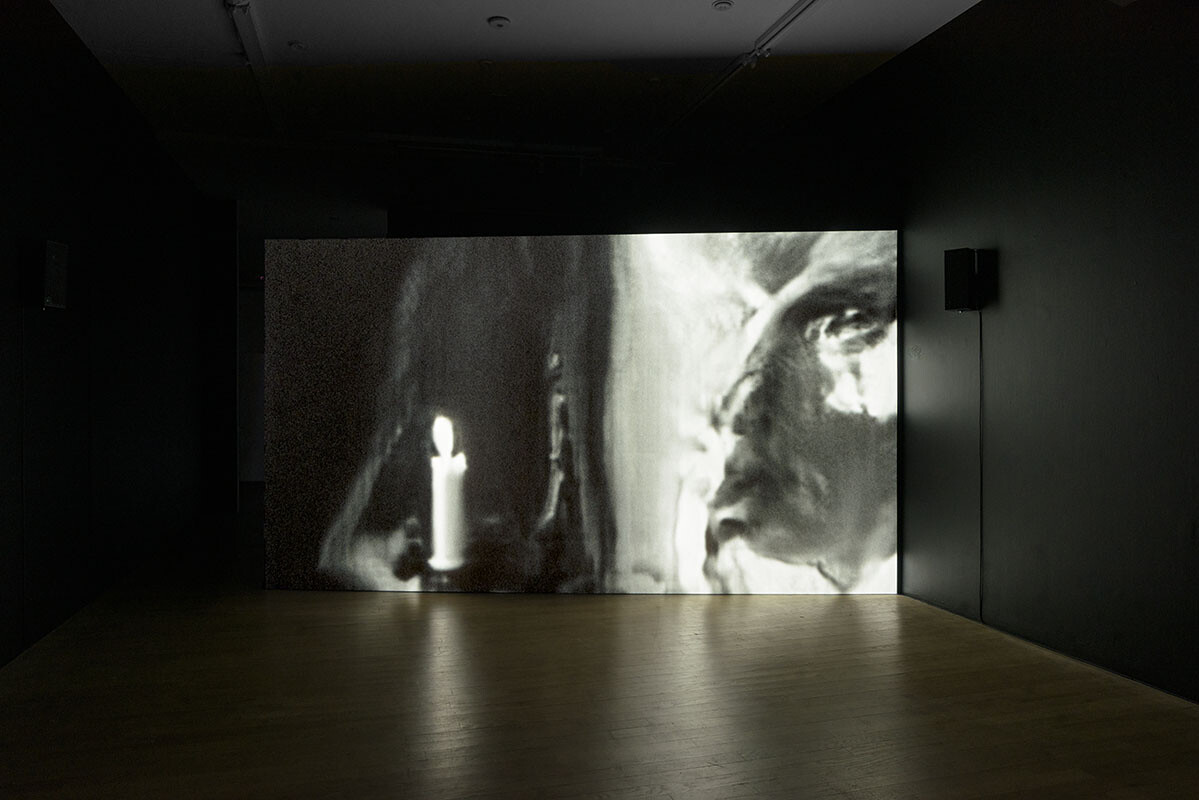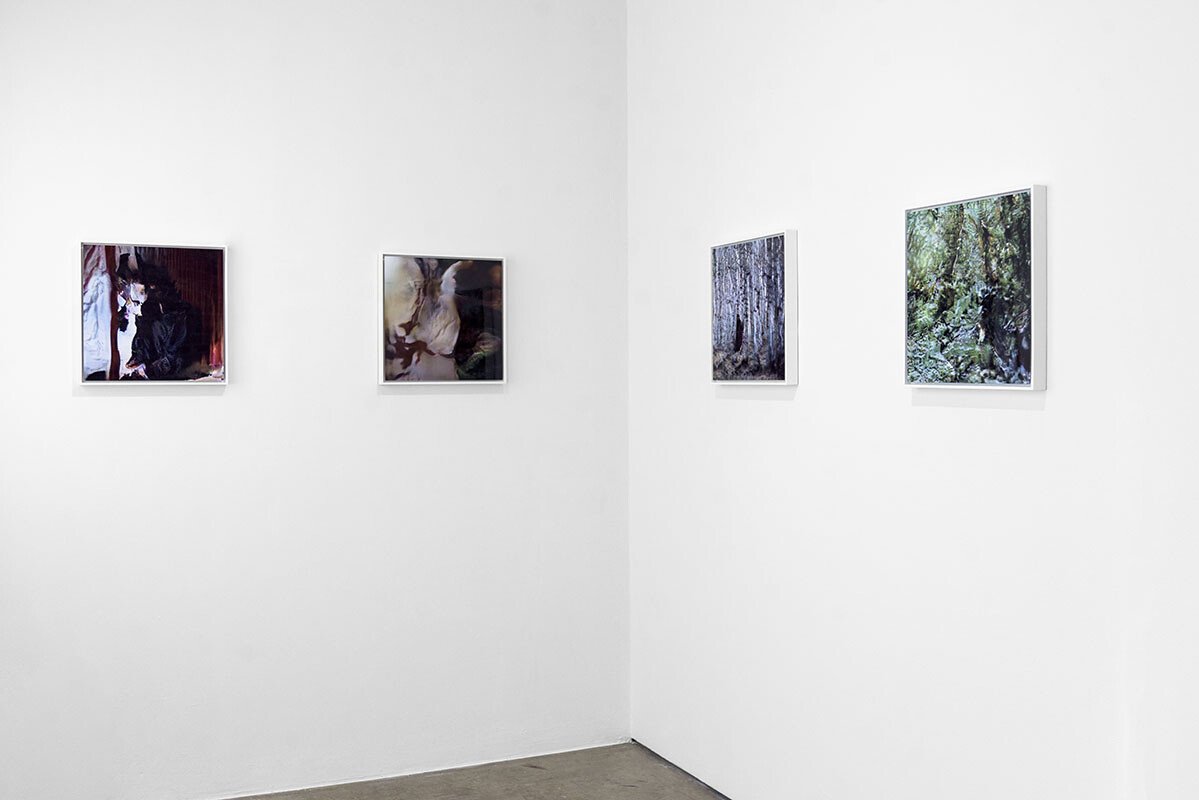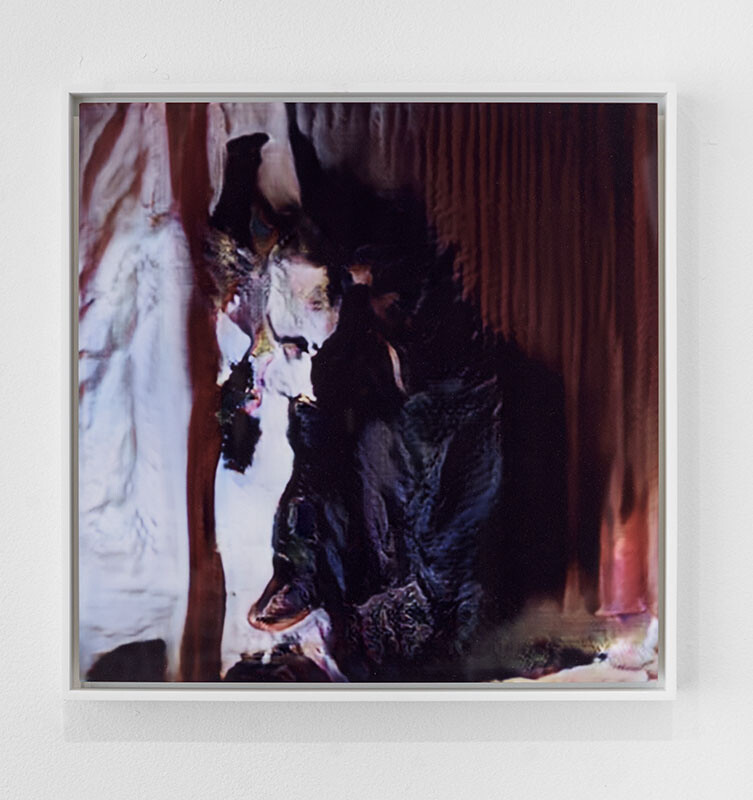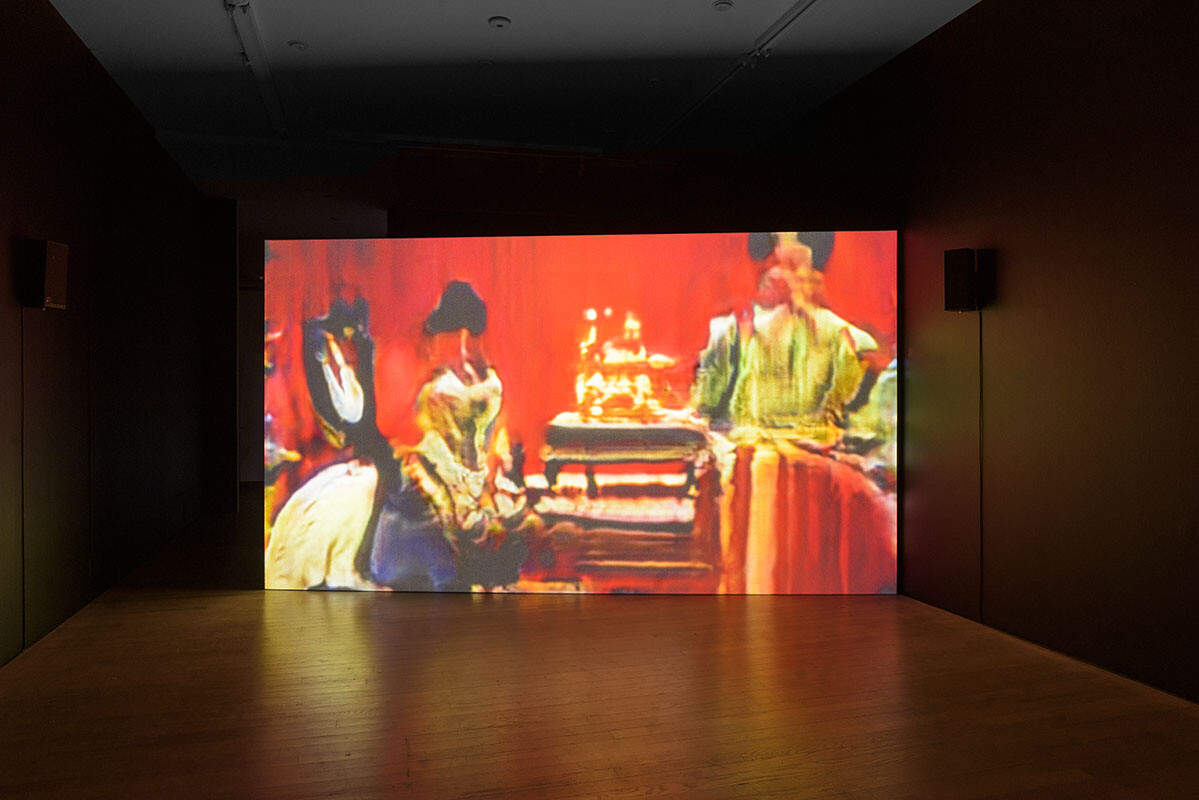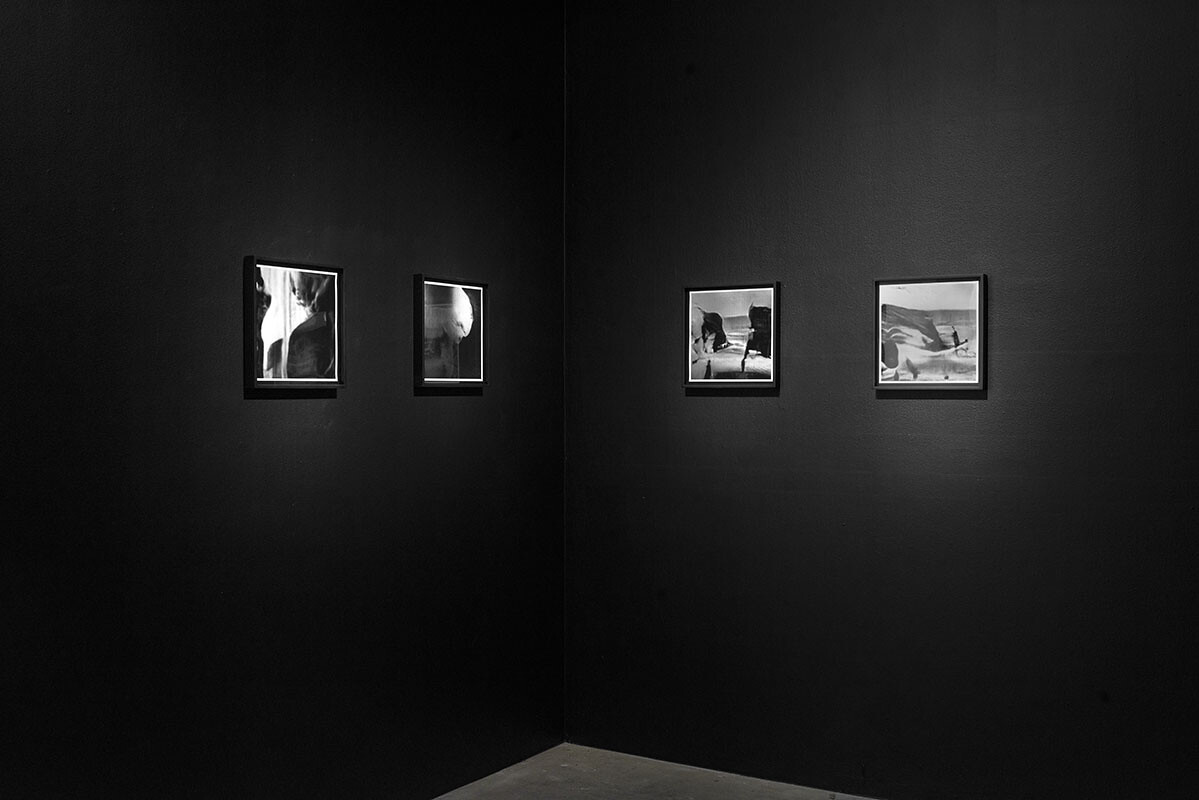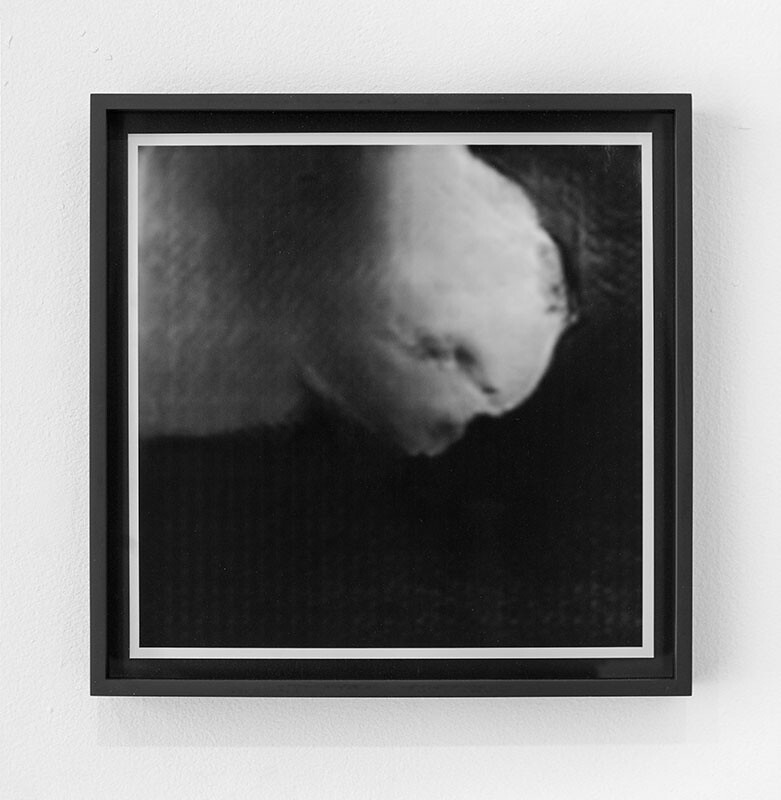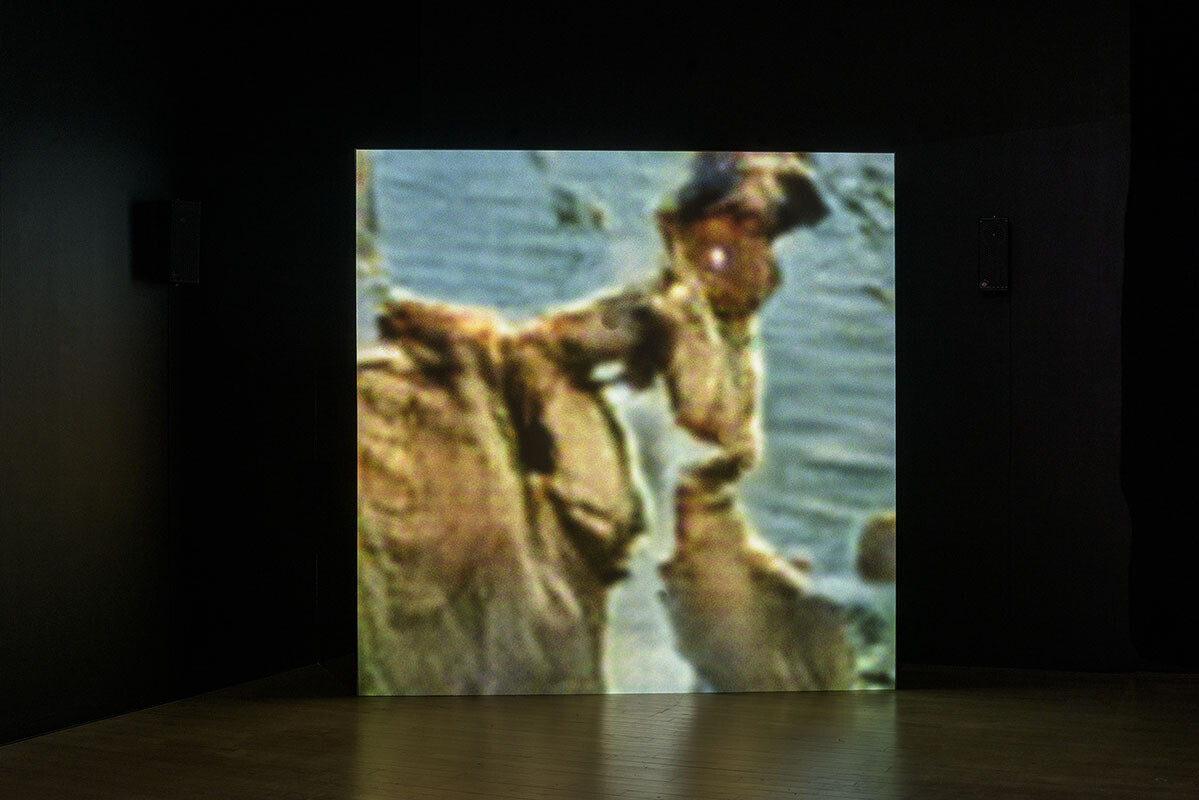What would it take to simulate the sensorium of a single person on any given day and channel it into my own nervous system? Something like the SimStim technology in William Gibson’s 1984 novel Neuromancer, or the apparatuses that simulate the sensory experience of other people inhabiting other worlds in the Wachowskis’ 1999 film The Matrix. What if a machine were trained to create new 3D spaces based on photographs and videos: could it then simulate a world indistinguishable from our own?
Science-fiction fantasies and ethical questions such as these come easily when considering Casey Reas’s work. This has less to do with the images he creates than how he creates them. Reas is best known for co-developing Processing, an open-source software and coding language intended to make computer programming easier for non-programmer artists and designers. By turns poignant and unnerving, his exhibition “Alchemical” at New York’s bitforms showcases still images and videos made using generative adversarial networks (GANs), a machine-learning program that creates new images from processing thousands of existing ones. The images are accompanied by glitchy, hypnotic music composed by Jan St. Werner, one half of the electronic music duo Mouse on Mars.
In the first room in the gallery, a series of eight square-format prints from the “Untitled Film Stills” series (all works 2020) set an uneasy tone for the exhibition. In each composition, it appears as though something is missing, while something else unknown, monstrous, at times even frightening, has been added. Howling faces emerge from a lush forest; a head appears caught in the midst of an alchemical transmutation, oozing over a neck and shoulders. One particularly haunting piece, depicting a white head-shaped blob before a gray gradient, lies somewhere between the baby from David Lynch’s Eraserhead (1977) and the scarf-covered faces of René Magritte’s The Lovers (1928). Shading and blur—a result of the GAN process—lends each still scene a sense of unpredictable and disquieting motion. These disturbing, hallucinatory works suggest that one of Reas’s aims may be to harness AI’s capacity to overwhelm the senses—one reason that people fear the technology—while at the same time demonstrating its potential as a malleable, artistic medium.
Werner’s music—created with granular synthesis, a process that takes microscopic samples of sound and allows the musician to time-stretch, pitch-bend, EQ, cut-up, loop, and modulate them with all manner of audio effects in real-time—sets a jittery tempo for the videos. In another room in the gallery are freestanding screens, onto which Reas has projected a series of untitled, animated video works made using GANs. To create each frame, the artist processed thousands of photographs, paintings, and film stills, resulting in distorted images that are completely new while remaining eerily familiar. Seamlessly animated and cut to Werner’s music, slight alterations in the GAN process create variations within each frame. Like Werner’s sound design, the objects depicted in Reas’s images distort, stretch, and twist until they become something new—or disappear. At first, I thought I was watching pure-abstraction—grainy and handmade, like a digital descendant of Harry Smith’s experimental films—until I believed I recognized the mouth of Johannes Vermeer’s Girl With a Pearl Earring (ca. 1665) emerging from the gray slurry. The facial features faded, and in their place appeared the hand of a small child reaching towards me with deformed, twitching fingers.
There is the sense of witnessing a private, secretive, and interior process, yet one contrasted by the vast exterior of open-source images on which it feeds. It’s not quite dream imagery, more like unconscious thoughts before they can be articulated. A few segments were generated from instantly recognizable films, such as Ingmar Bergman’s Persona (1966) and Nagisa Ōshima’s In the Realm of the Senses (1976). But even when the origin is obvious, with the characters, setting, and narrative stripped away, all that remains is psychological anguish and melancholia.
Reas’s reliance on computer programming might seem cold, yet the artist’s hand is present throughout “Alchemical.” A sense of tactility informs both processes—I can imagine Werner twisting synthesizer knobs and banging his head while Reas cuts, crops, refocuses thousands of images, and adjusts his programming code. In the end, the human element—its ability to move us—makes the possibility of a future shaped by AI seem less dystopian than the worlds depicted in Neuromancer or The Matrix.

